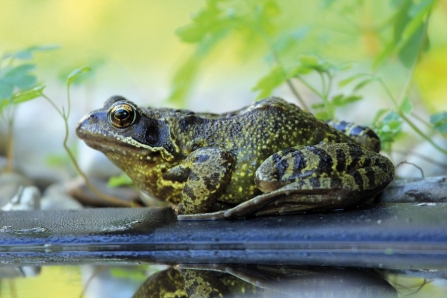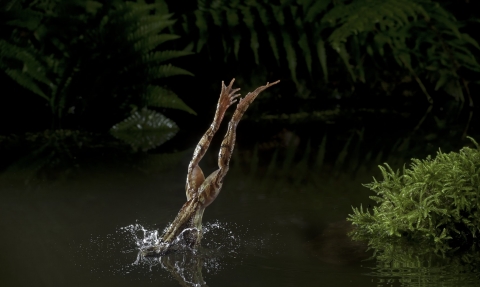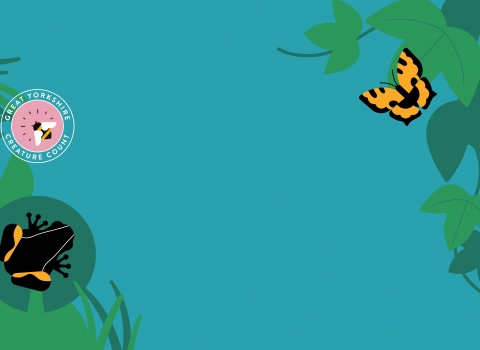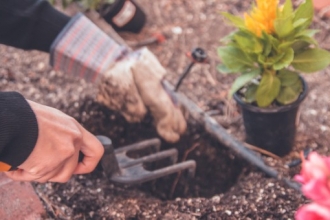Not just the stuff of fairy tales...
In spring, calm, quiet evenings are interrupted by the croaking call of male frogs romancing females. Love is in the air, or actually, in the water! Soon, garden ponds across the country erupt with masses of gold-speckled frogspawn as each female lays up to 2,000 eggs in a season.
These wriggling dots transform quickly into the familiar common frog, easily recognisable by their smooth, wet-looking skin (while toads have dry, warty skin).
Will you record one during the Great Yorkshire Creature Count?

Common frog © Jim Higham
Why are frog great garden neighbours?
Frogs provide a great garden pest removal, with tadpoles eating algae and water fleas and adults hunting for snails, slugs and earthworms.
Welcoming frogs to your wild patch
Encourage frogs into your garden during and after the Great Yorkshire Creature Count with the following top tips!
1) Create a pond in your garden - no matter how small!
Having water in your garden is one of the best things you can do for frogs and other amphibians. Make sure to give it sloping sides or put stones around the edge so frogs can hop in and out.
Even adding a small ‘pool’ using an old washing-up bowl can make a big difference!
2) Leave some long grass
Areas of long grass provide a cooler microclimate and somewhere where amphibians can shelter from predators. You can also leave piles of leaf litter, logs, stones or even upside-down flowerpots to give amphibians a place to hibernate and keep cool and moist.
3) Go fish-free in your wild space
Avoid stocking your pond with fish - they can eat frogspawn and tadpoles as well as spread disease.

A no-longer-common frog...
Childhood memories are filled with gelatinous frogspawn that magically transforms into wriggling black dots and then, too soon, becomes shiny green frogs hopping away into secret, damp hideaways...
Science indicates that the common frog is becoming uncommon with declines in the number of sightings recorded across gardens in recent years.
Since the 1970s British amphibians have faced greater and greater challenges. Ponds in gardens and across our countryside have disappeared meaning breeding sites have become few and far between. Urbanisation has also disrupted key migration routes making it harder for the remaining animals to find each other. Against this harsh backdrop new diseases are pushing many species to the brink of extinction.
The fast living Toad from Wind in the Willows may soon become fiction as its numbers have declined by a shocking 68% in the last 30 years.






